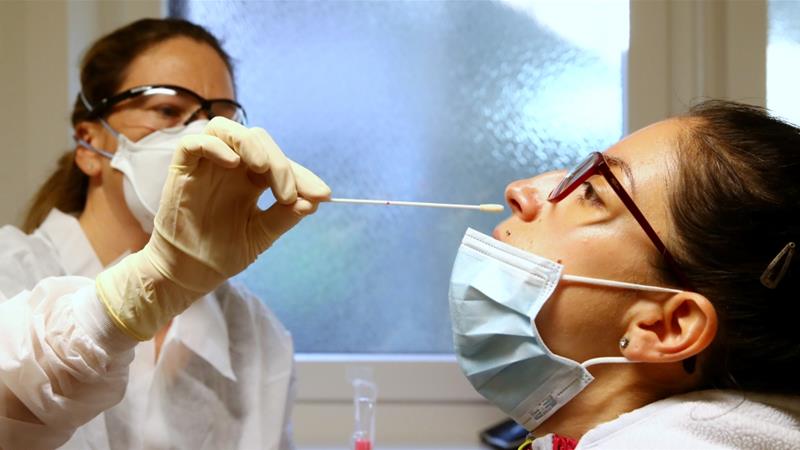
South Florida’s three major counties have added nearly 1,600 COVID-19 cases, according to new state data released Thursday.
One bright spot: the share of tests which came back positive dropped day-to-day after the region saw jumps the previous two days.
The positivity rate can fluctuate from day to day, however, and the week-to-week trend continues to show troubling signs for the region.
Thursday’s report saw another 387 cases in Broward County, bringing the previous week’s average daily cases to 366. One week prior, the county saw just 233 new cases per day.
That jump is not just due to increased testing. A higher share of individuals are also testing positive even as testing increases.
The positivity rate Thursday dropped to 6.5% after sitting at 10.2% and 11% in Tuesday’s and Wednesday’s reports, respectively. That dip will need to hold to bring those week-to-week averages down, however.
The numbers were even more troubling in Miami-Dade County, which added 889 cases in Thursday’s report.
In the midst of that week-to-week increase, the Commission on Presidential Debates announced Miami’s Adrienne Arsht Center for the Performing Arts will host a presidential debate in October.
Like Broward, Miami-Dade’s day-to-day positivity rate dropped. The same was true in Palm Beach County.
Palm Beach’s week-to-week trend is not as jarring, but that’s in part because the region saw an earlier jump in the share of tests coming back positive.
Palm Beach hit a sustained double-digit positivity rate earlier than Broward and Miami-Dade. While the lack of a sharp increase is welcome news, the county still faces concerns.
Officials have slowed Palm Beach County’s reopening and on Tuesday county commissioners unanimously approved an order mandating masks be worn in public.
Leaders in Broward and Miami-Dade counties have promised increased enforcement of social distancing mandates as well.
In all three major South Florida counties, the median age for new positives has sat in the mid-30s or low-40s. That younger cohort may not be susceptible to longer-term damage or death caused by the virus as some of the more vulnerable population.
However, health officials worry that if the virus continues spreading among younger Floridians, it makes it easier to continue spread to older or immunocompromised individuals, which could feel the virus’s worst effects.
